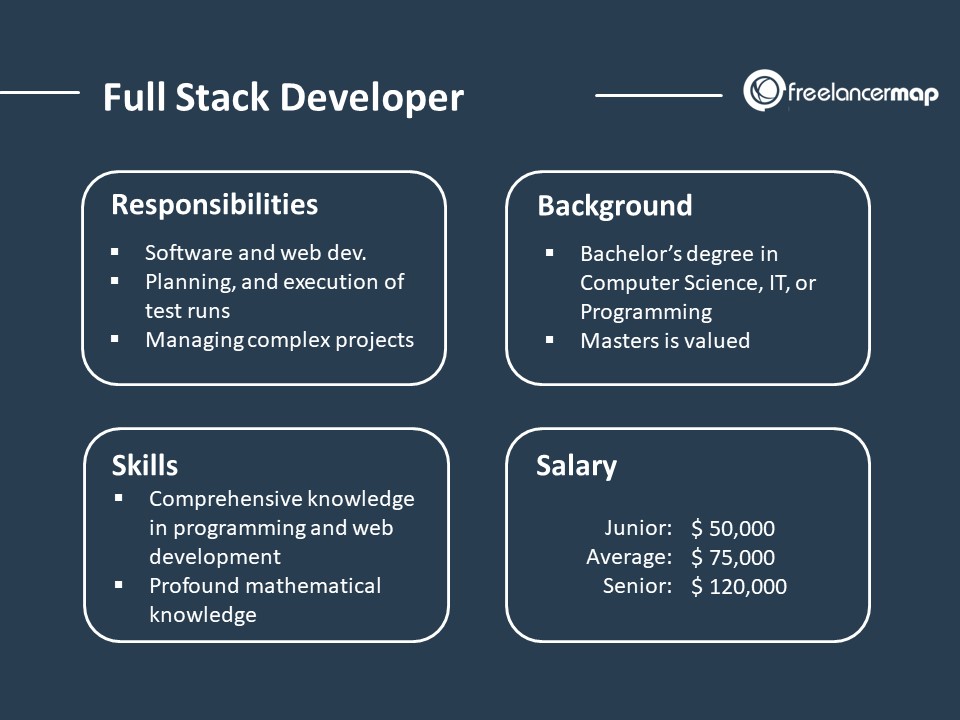Pulse of Information
Your source for the latest insights and updates.
Full-Stack Development: The Swiss Army Knife of Coding
Explore why full-stack development is the ultimate coding tool, equipping you with skills to tackle any tech challenge! Discover more now!
What is Full-Stack Development and Why is it Essential for Modern Web Applications?
Full-Stack Development refers to the practice of working on both the front-end and back-end of web applications. The front-end, or client-side, is where users interact with the application, incorporating HTML, CSS, and JavaScript to create a seamless user experience. Conversely, the back-end, or server-side, involves databases, server management, and application logic, often utilizing languages like Python, Ruby, or Node.js. This holistic approach allows developers to construct entire web applications efficiently, as they possess the skills to manage both the visible interface and the underlying code that makes it function.
The importance of Full-Stack Development lies in its ability to create cohesive and innovative web applications vital for modern businesses. As user demands for interactive and responsive applications increase, the need for developers who understand both sides of the development process is crucial. A full-stack developer can take a project from concept to completion, reducing communication barriers, speeding up the development cycle, and improving overall project efficiency. In a competitive digital landscape, the versatility afforded by full-stack skills is essential for delivering high-quality applications that meet user expectations.

Top 10 Skills Every Full-Stack Developer Should Master
In the rapidly evolving world of web development, full-stack developers are in high demand, requiring a diverse skill set to manage both front-end and back-end tasks effectively. The top skills every full-stack developer should master include:
- HTML/CSS: The foundation of any web application.
- JavaScript: The essential programming language for interactive web applications.
- Responsive Design: Ensuring applications work across various devices.
- Version Control/Git: Managing and collaborating on code effectively.
- Back-End Languages: Such as Node.js, Python, or Ruby.
Additionally, a successful full-stack developer must excel in database management and understand SQL and NoSQL databases, enabling efficient data storage and retrieval. Furthermore, knowledge of RESTful APIs is crucial for communication between the front-end and back-end. Other vital skills include:
- Frameworks: Proficiency in front-end frameworks like React or Angular.
- DevOps Practices: Understanding deployment and CI/CD processes.
- Soft Skills: Strong problem-solving and communication skills for teamwork.
How Full-Stack Development Bridges the Gap Between Frontend and Backend Technologies
In the world of software development, full-stack development serves as a comprehensive solution that connects frontend and backend technologies. As a full-stack developer, one possesses the skills necessary to work on both the client-side and server-side of applications, which facilitates seamless communication between the two. This holistic understanding allows developers to create a more cohesive user experience, ensuring that the aesthetic aspects of a web application align perfectly with the underlying functionality. By bridging this gap, full-stack development not only enhances collaboration but also accelerates the overall development process, making it easier to implement changes and troubleshoot issues.
The integration of frontend and backend technologies through full-stack development enables a range of benefits for businesses and developers alike. Key advantages include:
- Improved Efficiency: Full-stack developers can handle both layers, reducing the need for multiple specialists.
- Better Communication: With a comprehensive understanding of both sides, full-stack developers can communicate effectively with team members, minimizing misunderstandings.
- Cost-Effective Solutions: Hiring a single developer who can manage both areas can save time and resources for organizations.
By recognizing and leveraging these benefits, organizations can maximize their development efforts while delivering high-quality web applications.